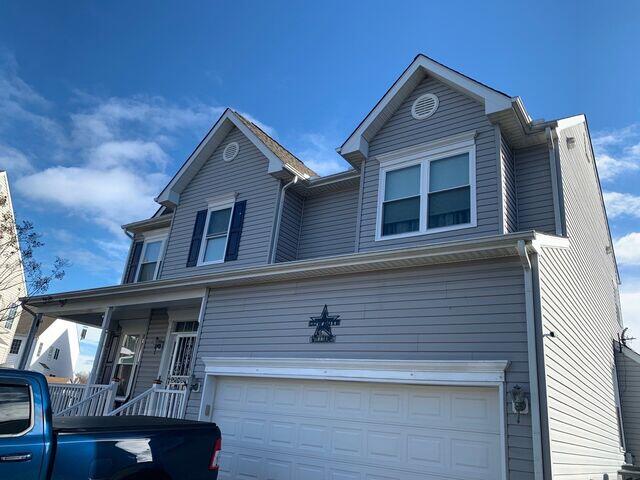
Rooms over a garage
This is not a great idea, but one that has been done a lot. First off, an attached garage, especially one with bedrooms directly overhead, exposes the occupants to all sorts of VOCs and other harmful airborne chemicals typically found in garages. Also the floor spaces of the rooms overhead are generally found with very little insulation. As a result they are cold in the wintertime. The Dr. Energy Saver solution: dense pack the floor cavities of the second story with TruSoft™ cellulose insulation.
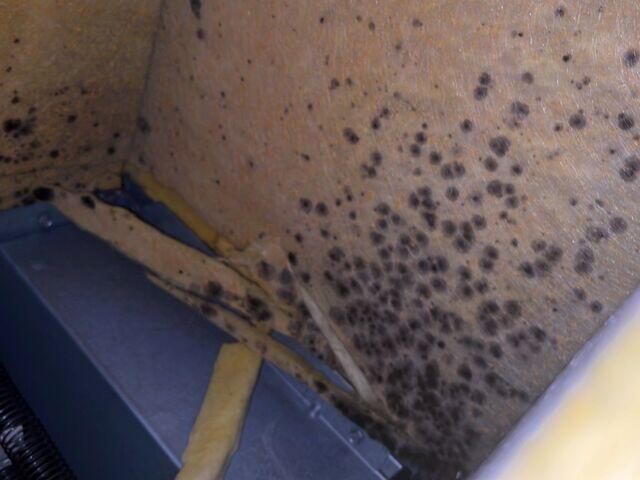
Mold in the air ducts
Would you want to breathe air that was passing by all this active mold growth? Certainly not. Lawson's Platinum Duct Cleaning service removes the mold.
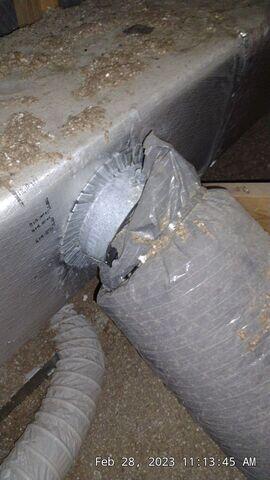
Disconnected HVAC duct
This is a major problem - when the branch ductwork completely separates from the trunk line. It happens all the time, and it causes havoc with the HVAC system, throws it out of balance, and wastes huge amounts of money in energy bills. That's why its important to have the ductwork inspected, corrected, and then sealed from the inside out with AeroSeal™ technology.
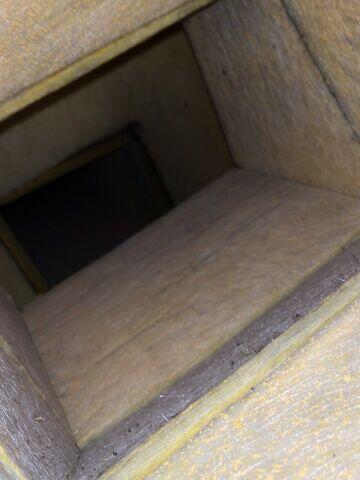
Inside the duct work after it was cleaned
The ductwork looks as clean as it was the day it was installed.
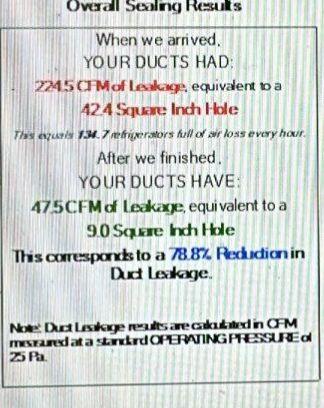
Duct sealing results
This is an amazing result. 78.8% of the air that was escaping the ductwork is now actually reaching the rooms where it was intended to be delivered. That's a huge savings of energy and cost for the homeowner.
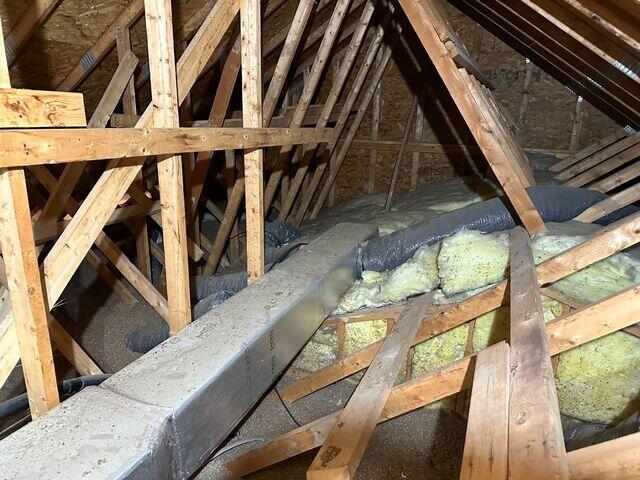
Oh Boy!
I feel bad for the Lawson Home Services crew when they stepped into this mess. All that insulation has to come out, all the ductwork has to be cleaned, sealed, and insulated. Fortunately, the crew is well trained in the fastest, most efficient, and effective way to get this job done - right.
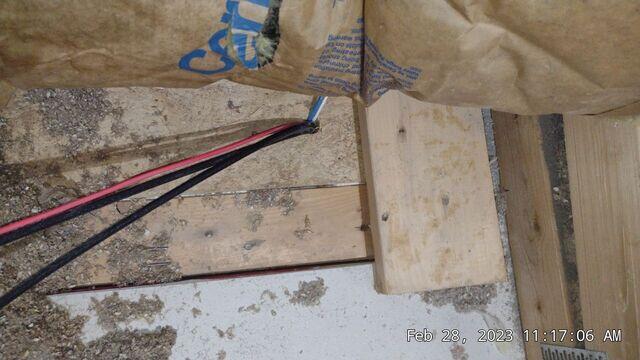
Gaps that allow air to escape into the attic
These gaps were left by the original construction. Only in the past 25 years have building practices began to change . Unfortunately these gaps were left unsealed and the insulation was installed. The old insulation has to be removed entirely so the gaps can be found and sealed. Too bad the old contractors didn't know this. It would have saved a lot of work and avoided huge waste of energy over the years.
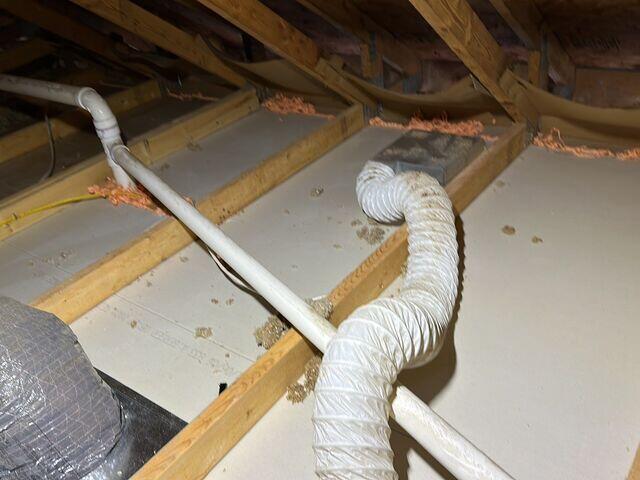
Air Sealing a clean attic floor
As you can see here, the original attic insulation has been vacuumed out and the process of sealing up the gaps through which air escapes from the rooms below has begun. The orange stuff is Zyp™ foam, an expanding foam that is sprayed into the cracks to stop the air leaks.
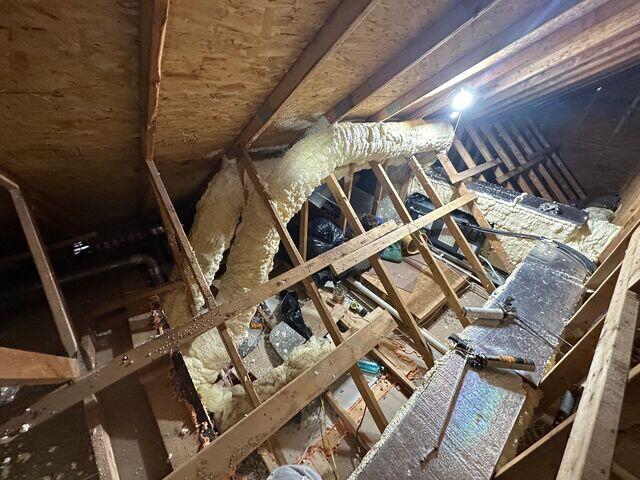
Complicated attic ductwork
The attic is the worst place for ductwork. First, the ducts are exposed to the outside air temperature which is very different from the temperature of the air inside the ducts. Add to that the potential for that conditioned air inside those ducts to leak away into the attic where it does no good at all for the comfort of the occupants in the rooms below.
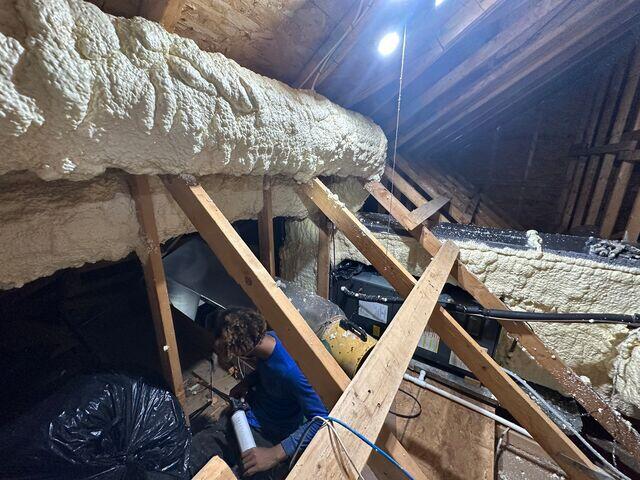
Insulating the ductwork with spray foam
This was a complex job as this ductwork was intertwined among the rafters. But Lawson's dedicated crew got to them all. The worker here is seen air sealing openings in the attic floor, another critical step that must be performed after first removing the old insulation, and before blowing in the new insulation. These guys work hard!!
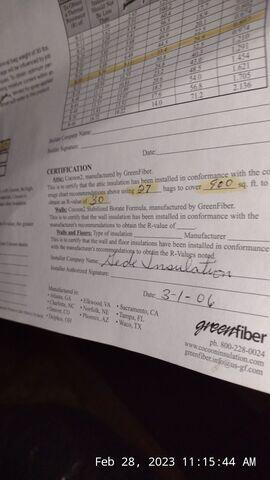
The certification from the original insulation contractor
They said they blew in and R30. That's not what our energy auditor found. Of course, who would have known the difference, but an energy auditor? Lawson Home Services has got your back.

R30?
According to the certificate left by the original insulation contractor this attic was blown to R30. But as you can see they skimped a bit. Lawsons always installs what they say they install and they leave the measuring signs in place so anyone who wants can check our work. Lawson's have your back!
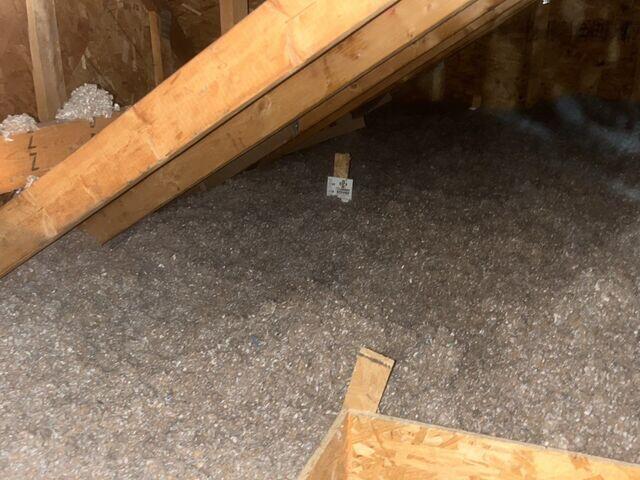
Look now!
Looks very different than it did when we started.

Now Look!
The attic is transformed by the TruSoft™ insulation which essentially buries everything, including much of the HVAC ductwork.
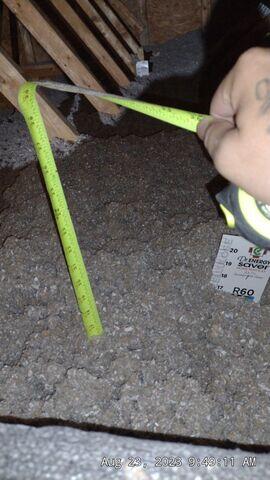
R60 and no skimping
Lawson's crew always leave the measuring signs up so anyone can check our work. If we say we blew the attic to R60 you can trust that we did.
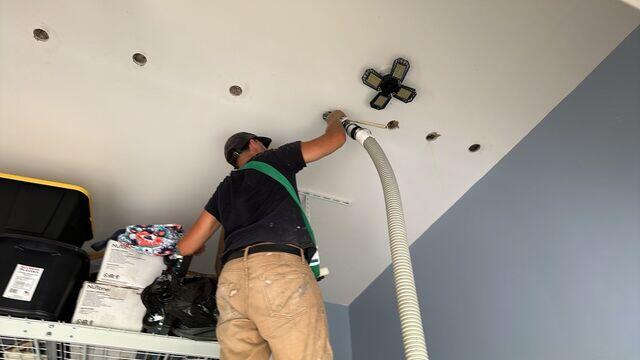
Insulating the floors of the room above the garage
The only way to insulate these floors is to drill openings between each of the floor joists and blow the insulation into the spaces with forced. This is known as "dense packing". Once the spaces are filled the drywall ceiling holes are plugged and you never know this work was ever done.
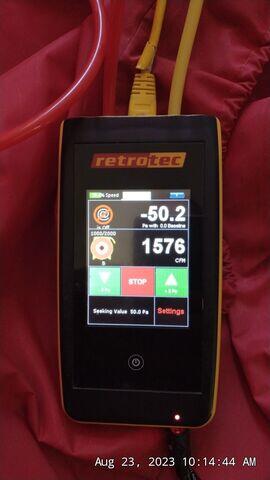
The blower door reading tells the story
We compare the beginning blower door reading with the final to see how effectively the attic air sealing work was done . In this case the starting number was 2143 cfm. Here is has dropped to 1576 cfm, a 26% reduction overall in the leakiness of the home. The blower door, by the way, is an apparatus that is placed typically in the front door - all the other windows and door are closed tightly and the blower door pulls a slight vacuum on the whole house until it reaches the standard (50 pascals). The equipment then measures the airflow it takes to maintain this pressure. This directly correlates to the leakiness of the home.

